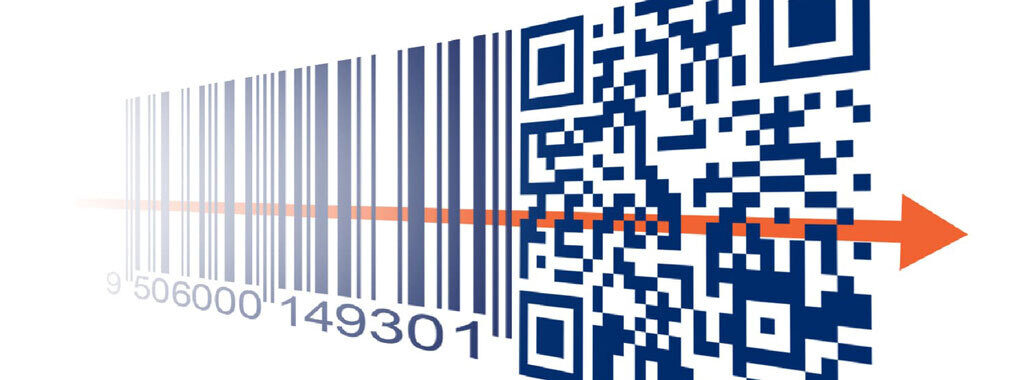The 2D barcode as successor to the barcode
The 1D barcode or barcode has been around for 50 years. Now that this one-dimensional barcode has proved its worth for half a century, a successor is ready that will give consumers, manufacturers and retailers much more information, namely the 2D barcode.
For 10 years at Food-IT Solutions
For Food-IT Solutions, working with 2D barcodes is by no means an innovation, as we have been working with the GS1-DataMatrix barcode in our IC-trace software for more than 10 years.
This GS1-DataMatrix barcode is a 2D barcode intended to pass on all the necessary information about a product to the next link in the industry.
To the general public, QR code is best known as a 2D barcode. This QR code aims to provide information to the general public.
What is the 2D barcode?
A 2D barcode is a 2-dimensional barcode that is scanned with an image-based scanner. It is a very small barcode that can hold a huge amount of data and is very easy to read. Instead of vertical bars, this barcode is made up of vertical and horizontal blocks.
The GS1-DataMatrix barcode and the QR code are both examples of 2D barcodes. Besides the visual difference from the barcode, this barcode offers the possibility of passing on much more information in a structured way to each link in the chain. Among other things, this is a plus in the receiving procedure at food companies.
The GS1 standard
GS1 is an organisation that ensures the proper use of barcodes worldwide. Good to know is that not every 2D barcode is a QR code. The QR code known to the public serves to access a URL (website), but it is not according to the GS1 standard.
The more industrial 2D barcode is the GS1-DataMatrix barcode. It contains designations (Application Identifiers) that allow data to be interpreted in the same way across the world. This has many advantages in industrial processing. For example, instead of putting two sets of barcodes under each other, much more data can be read in a small 2D barcode with one scan. This simplifies the transfer of information between companies.
A 2D code, all kinds of information for retail
The classic barcode aimed to identify items in a quick and efficient way. When it was introduced in 1973, cashiers no longer had to manually enter prices and the accuracy of inventories improved. Later, the barcode opened the door to new technologies, such as self check-out.
The 2D barcode does much more than identify products. Indeed, it offers the possibility to provide all kinds of information about the product via the label on the packaging. Think of a website, a recipe, the best-before date, allergen information, instructions for use, the serial number, batch number or how a product can be recycled.
A QR code will therefore be used for this purpose on packaging intended for consumers.
Source of information for consumers, manufacturers and retailers
The 2D barcode links the physical world to the online world. A single code thus provides access to a wealth of data. Among other things, the previously unprecedented amount of information helps consumers make purchasing decisions based on a QR code on the product, and it helps manufacturers optimise processes based on a GS1-DataMatrix barcode with structured data.
Through the QR code, consumers can use their smartphones to access brand and product information in real time, such as a product's journey, allergens, shelf life, promotions, recalls or instructions for use.
Through the GS1-DataMatrix barcode, manufacturers and food companies can make their processes more efficient by taking new steps in terms of inventory management, traceability, safety and sustainability.
Legislators can use 2D codes to track the origin of products and ensure their safety.
2D barcodes in IC-trace
The general breakthrough of 2D barcodes in retail is expected in 2027. At Food-IT Solutions, we are fully prepared for this, as we have been working with 2D barcodes for 10 years.
In fact, the use of 2D barcodes with standardised GS1 link has been fully integrated into IC-trace, our comprehensive software package for the food industry, for many years.
Today, IC-trace offers great advantages in terms of 2D barcodes, and this will only increase in the future: during the receipt procedure, product information is automatically read into IC-trace via the GS1-DataMatrix barcode. This forms the basis for traceability and has an impact on stock, shelf life, etc.
We are happy to guide you through the start-up of working with your complete labelling process (1D, 2D barcodes,...) at both supplier and customer level.

